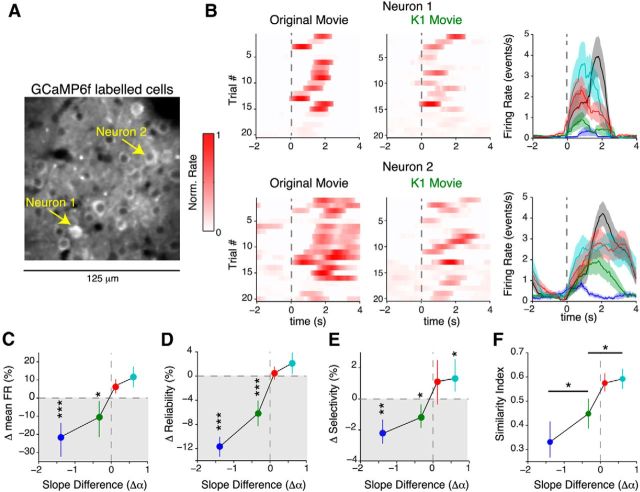Figure 4.
Decorrelated movies evoke weak and unreliable responses in awake mice. A, Two-photon image of a population of 29 neurons expressing GCaMP6f. See Materials and Methods for details. B, Example raster plots (left and middle) and trial-averaged response (right) of the two cells marked in A. Both cells responded strongly to the spatially correlated stimuli (original, K1.5, and K2 movies), but less so to K1 and very weakly to K0 movies. The shaded region indicates the SEM computed over 20 trials. C, Percentage change of mean firing rate relative to the original movie. Neurons in awake mice also responded with significantly lower firing rates to spatially decorrelated stimuli. The decrease in firing rate is commensurate with OGB1 data in anesthetized mice (Fig. 2E). D, Change in reliability relative to the original movie shows a strong decrease in reliability as spatial correlations are removed, similar to anesthetized animals (Fig. 3C). E, Significant reduction in selectivity (measured from lifetime sparseness) for K0 movies (p < 10−5), but less so for K1 movies (p = 0.012). F, Quantification of similarity index relative to the original movie. Similar to Figure 2D, response similarity monotonically decreased as spatial correlations were removed from the natural movie. The p values in F were computed using a post hoc rank-sum test relative to K2 movies. All other p values were computed via Bonferroni-corrected rank-sum test. Data for C–F are from 230 neurons (4 mice) and are represented as median ± 95% CI. *p < 0.05; **p < 10−3; ***p < 10−4.

